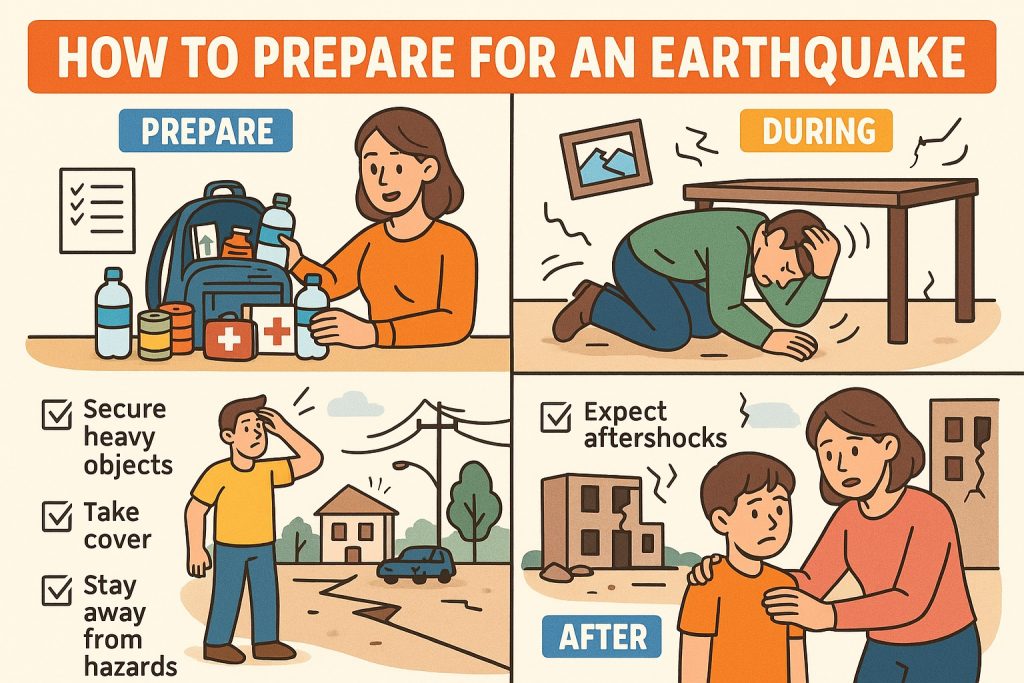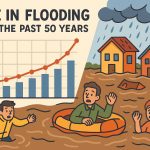Earthquakes strike suddenly, without warning, and can cause severe damage to buildings, roads, and infrastructure. While it’s impossible to predict exactly when and where a quake will occur, being prepared can save lives. Following expert guidelines before, during, and after an earthquake increases your chances of staying safe and helping others.
Before an Earthquake: How to Prepare
Preparation is key. Here are practical steps you should take before an earthquake strikes:
- Create an emergency kit that includes water, non-perishable food, flashlights, batteries, a whistle, a first aid kit, medications, and copies of important documents.
- Secure heavy objects in your home. Fasten bookshelves to walls, place heavy items on lower shelves, and anchor appliances.
- Know safe spots in every room, such as under sturdy tables or against interior walls, away from windows and heavy furniture.
- Develop a family communication plan so you can reconnect after the quake if separated.
- Practice earthquake drills regularly to ensure everyone knows what to do.
- If you live in a high-risk area, consider retrofitting your home for better structural resistance to shaking.
- Read all the instructions recommended by the Ministry of Emergency Situations.
During an Earthquake: What to Do
When the ground starts shaking, act immediately and stay calm. Follow these steps based on your location:
- Indoors:
- Drop, Cover, and Hold On: Get on your hands and knees, cover your head and neck, and hold onto something sturdy.
- Stay away from windows, mirrors, and anything that can fall.
- Do not run outside—it’s safer to remain inside during the shaking.
- Outdoors:
- Move away from buildings, streetlights, power lines, and trees.
- Drop to the ground and protect your head.
- In a vehicle:
- Pull over safely and stay inside the car. Avoid bridges, tunnels, and overpasses.
Shaking usually lasts less than a minute, but aftershocks may follow. Stay alert.
After an Earthquake: What to Do Next
- Check yourself and others for injuries. Administer first aid if necessary.
- Expect aftershocks, and be ready to take cover again.
- Inspect your surroundings: Avoid using damaged buildings, check for gas leaks, and avoid downed power lines.
- Listen to emergency broadcasts via battery-powered radio or mobile devices.
- Help neighbors, especially children, the elderly, and people with disabilities.
- If advised to evacuate, do so safely and calmly.
Preparation and knowledge reduce panic and confusion during earthquakes. Even in regions with lower seismic risk, it’s wise to plan ahead—earthquakes often come without warning.
Glossary
- Aftershock — A smaller earthquake that occurs after the main quake, in the same area.
- Drop, Cover, and Hold On — The recommended safety action during shaking: get low, protect your head, and hold onto something stable.
- Retrofitting — Strengthening a building to make it more resistant to earthquakes.
- Seismic risk — The likelihood of an area experiencing an earthquake.
- Emergency kit — A set of supplies prepared in advance for survival in a crisis.


